Conventions for the submission of manuscripts
Manuscripts and accompanying letters must be submitted electronically via the Editorial Manager of Springer VS Verlag. Manuscripts and accompanying material must be submitted in MS Word format. Both German and English-language manuscripts can be submitted. For English-language publications, American English spelling and punctuation will be used.
The KZfSS only publishes original contributions that have not already been published elsewhere. Versions of submissions that are already available online as working papers or in another form must be removed from the web after a submission has been accepted for publication in the KZfSS.
The KZfSS strives for good and clear language and asks all authors to pay attention to the linguistic quality of their contributions.
The following rules must be observed when writing manuscripts:
- Emphasis should be used sparingly and marked consistently in the manuscript. They can be set with double "quotation marks" or in italics.
- The structure should comprise a maximum of three levels. It follows the following scheme: Arabic numerals for sections [1, 2, 3], Arabic numerals for subsections [1.1, 2.1, 3.1] and italics for the third level [1.1.1, 2.1.1, 3.1.1]. The headings remain left-aligned and should contain descriptive text.
- Footnotes should be identified in the manuscript by superscript numbers without brackets. The footnote number should be placed outside the sentence. Footnotes should be used for additions to the content and should be used sparingly.
- Please explain abbreviations the first time they are used in the text.
- Bibliographical references should be incorporated into the text by means of parenthetical references to the bibliography (first names are not used). A semicolon should be placed between authors in the references in brackets, or a comma if the same author is cited more than once. Two authors are connected with "and". If there are more than two authors, "et al."should be added after the first author. Examples: "(Albrecht 2002, p. 798)", "(Swedberg 1998, 1999)", but: "(Swedberg 1998, p. 285; 1999, p. 30)", "(Hall and Soskice 2001, pp. 35 ff.), "(Albrecht 2002; Hartmann and Kopp 2001, p. 439; Friedrichs et al. 2002, pp. 128-129)".
- The bibliography is at the end of the manuscript. The bibliographical references should be given in the following order: Author's name, first name. Year of publication. Title. Subtitle (possibly year of first publication). Place of publication: Publisher. (Examples see below).
- Tables and figures: The place in the manuscript where the table or figure is to be inserted must be marked. A period or full-stop (.) is used as a decimal separator and a zero before the period is obligatory for decimal values less than one (incorrect: .123; correct: 0.123).
- The essay must be accompanied by abstracts in German and English of no more than 1800 characters each. An English title must be added to the English abstract.
- Five keywords in German and five keywords in English must be added to the article, which are not already included in the title of the article.
- The manuscript should be accompanied by document statistics.
- The journal publishes short biographical information at the end of each article in the scope of 3-8 printed lines. In detail, we ask for the following information (which should be given in the same order): First name, surname, year of birth, academic degree, university/workplace. Fields of research. Up to three publications (only the most recent and most important, especially books) - listed with title, place, year of publication and any co-authors. (Example: see below)
- In the anonymized form of the manuscript (in the text and also in the bibliography), all references to the author(s) must be avoided. With the exception of the file containing the title page, all uploaded files, including the separately uploaded abstract and separately uploaded tables and figures, are submitted to at least two reviewers via the Editorial Manager in the submitted version. Therefore, names and contact details may only be listed on the separate title page. Conspicuous self-citations and comments from which authorship can be inferred should be avoided. In the event of non-compliance with this recommendation, the KZfSS is not liable for the identifiability of the authors.
- Essays with more than 70,000 characters (including spaces) cannot be considered.
Example of biographical information
- Agathe Bienfait, 1962, Dr. phil., private lecturer at the University of Heidelberg. Fields of research: Political theory, social philosophy, sociology of culture, sociology of religion. Publications: Freiheit, Verantwortung, Solidarität. Frankfurt a. M. 1999; Das Weber Paradigma. Tübingen 2004 (with G. Albert, S. Sigmund and K. Wendt).
Examples of citations
BOOKS
- Brynin, Malcolm, and John Ermisch. Eds. 2009. Changing relationships. New York: Routledge.
- Cherlin, Andrew J. 1992. Marriage, divorce, remarriage. Cambridge, Mass.: Harvard University Press.
- Raudenbusch, Stephen W., and Anthony S. Brykony. 2002. Hierarchical linear models. Applications and data analysis methods. 2nd. Thousand Oakes: Sage.
BOOK SECTIONS
- Ermisch, John, and Thomas Siedler. 2009. Living apart together. In Changing relationships, eds. Malcolm Brynin and John Ermisch, 29-43. New York: Routledge.
- Härkönen, Juho. 2014. Divorce: Trends, patterns, causes, and consequences. In The Wiley Blackwell companion to the sociology of families, eds. Jaqueline Treas, Judith Scott and Martin Richards, 303-322. Chichester: John Wiley & Sons.
JOURNAL ARTICLES
- Coase, Ronald H. 1937. The nature of the firm. Economica 4:386-405.
- Ostendorf, Wim, Sako Musterd and Sjoerd de Vos. 2001. Social mix and the neighbourhood effect. Housing Studies 16:371-380.
INTERNET PAGE
- UNESCO. 2006. International Standard Classification of Education – ISCED 1997. Retrieved from http://www.uis.unesco.org/Library/Documents/isced97-en.pdf (Accessed: 30 July 2018)
